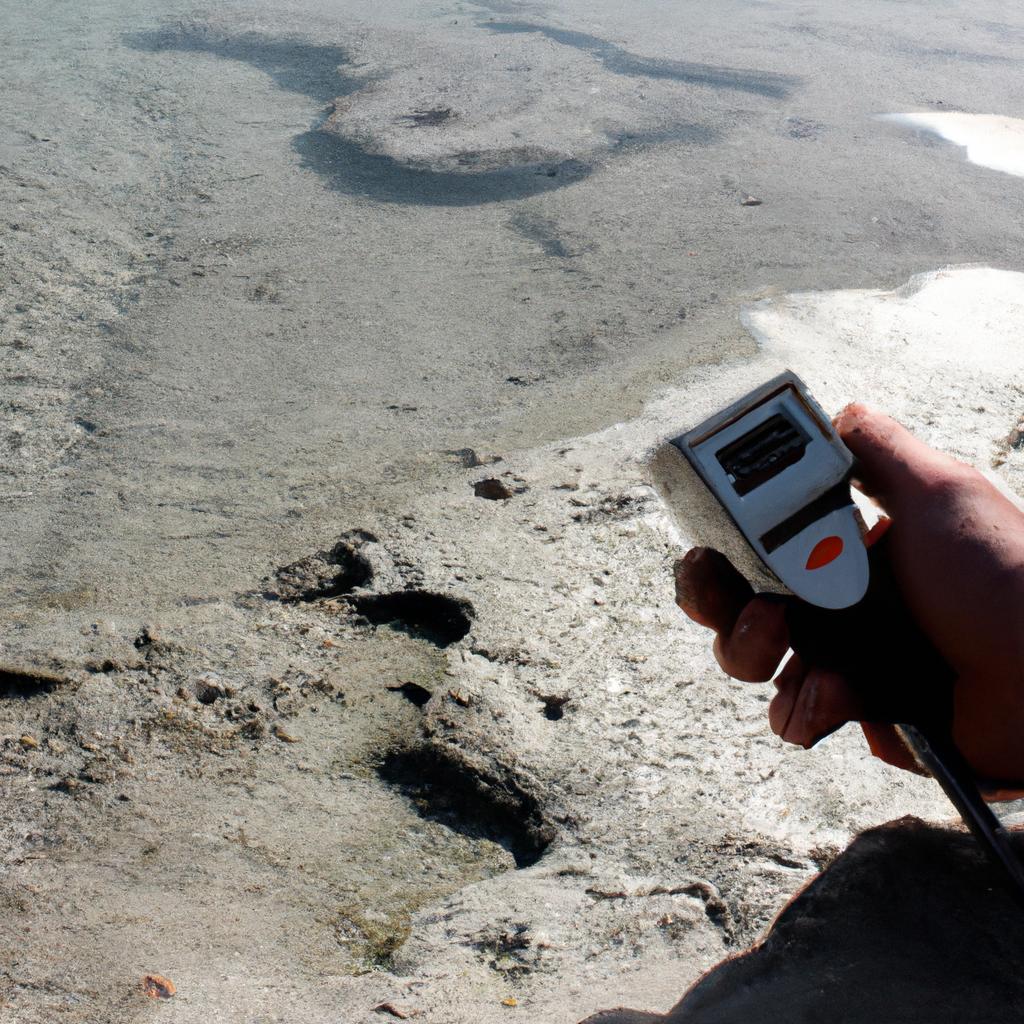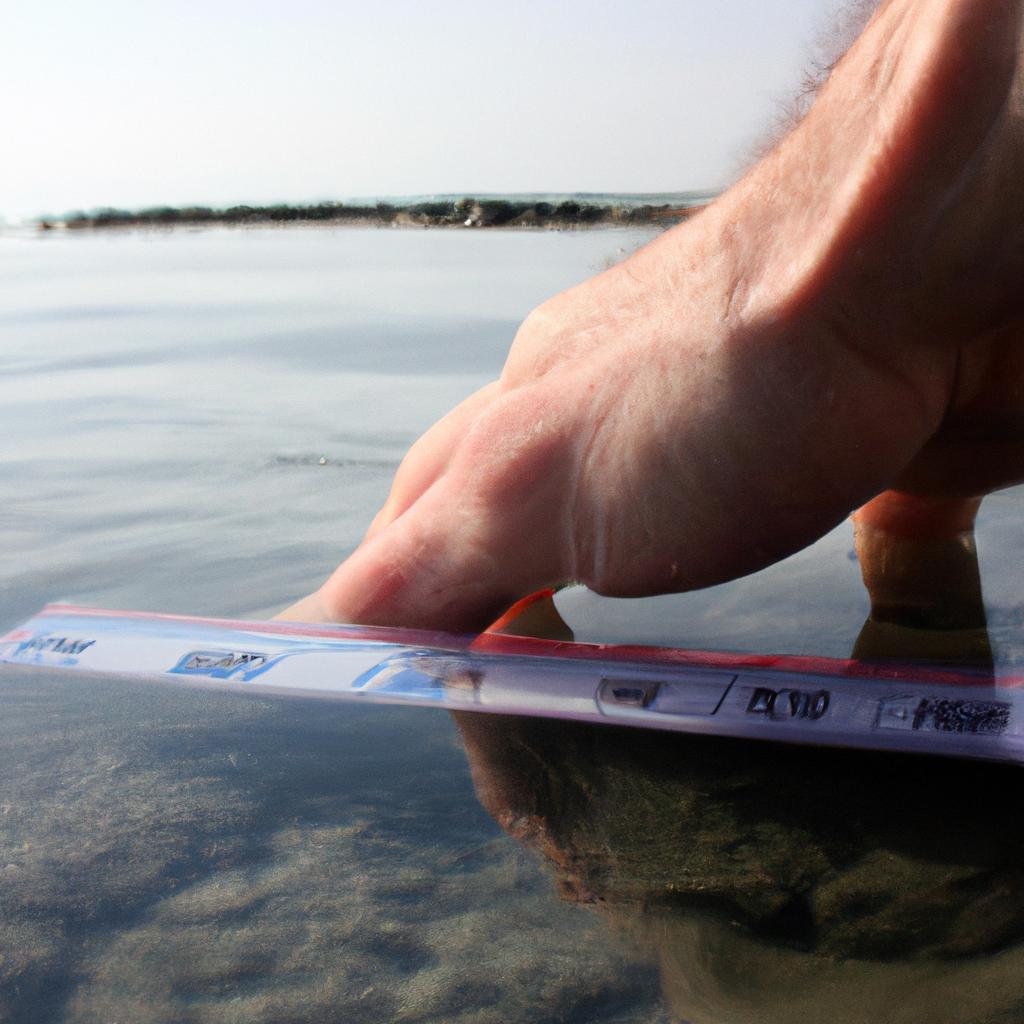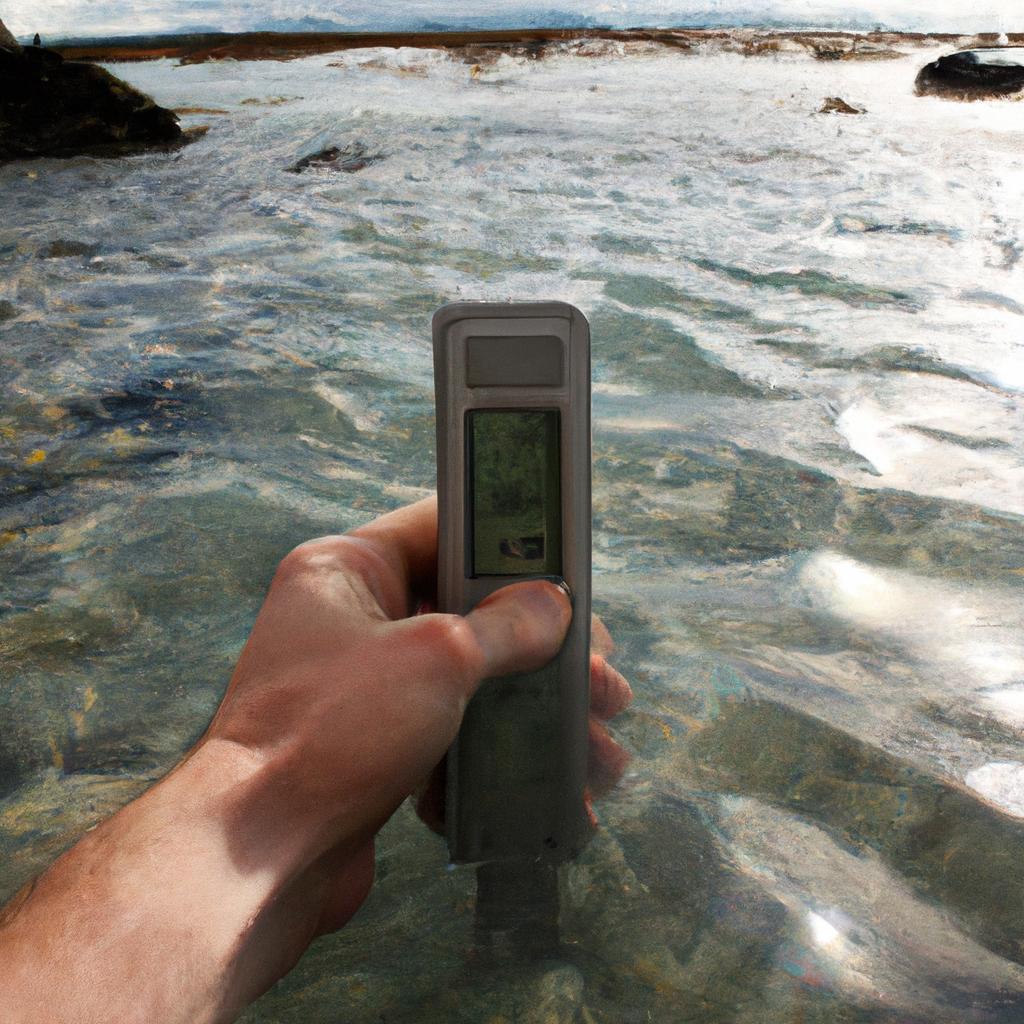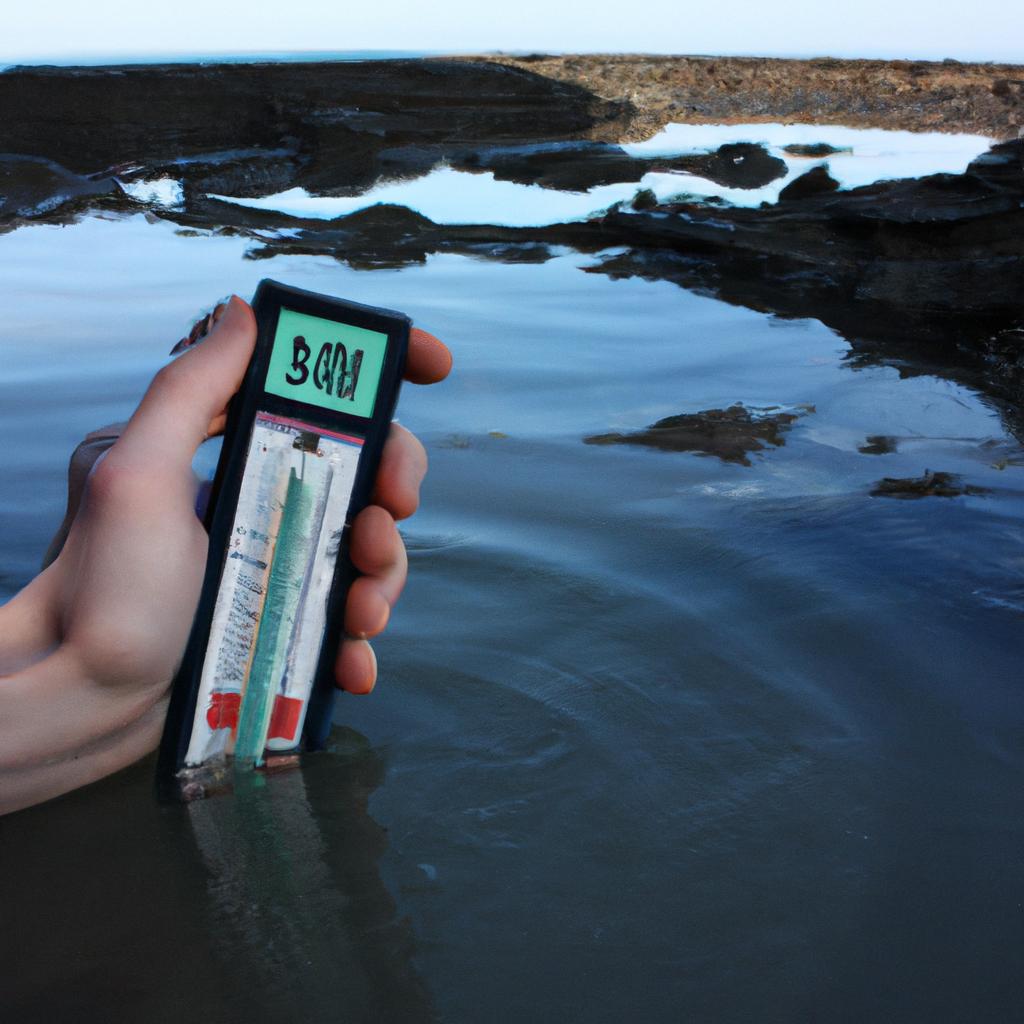Temperature rise and climate change have become pressing issues in recent years, with dire consequences for our planet. The link between temperature rise and sea level rise is a critical aspect of this complex phenomenon that demands closer examination. To understand the gravity of this relationship, consider a hypothetical scenario where global temperatures increase by 2 degrees Celsius over the next century. This seemingly small increment may result in significant changes to Earth’s ecosystems, particularly through the melting of polar ice caps and thermal expansion of seawater.
The connection between temperature rise and sea level rise lies in the fundamental principles of thermodynamics and oceanography. As temperatures increase, so does the energy within Earth’s system, driving various processes that contribute to rising sea levels. One such process is the melting of vast ice sheets and glaciers present at both poles. These frozen reservoirs store enormous amounts of water, which if released into the oceans due to warming temperatures can lead to substantial increases in sea levels worldwide.
Additionally, as seawater absorbs heat from higher atmospheric temperatures, it expands due to thermal expansion – a phenomena known as “ocean thermal expansion.” This process further contributes to rising sea levels globally. Together, these interconnected mechanisms underscore the urgency for comprehensive action against climate change and its implications on temperature rise-induced sea level rise.
The consequences of sea level rise are far-reaching and can have devastating impacts on coastal communities, ecosystems, and infrastructure. Rising sea levels can lead to increased coastal erosion, flooding, and saltwater intrusion into freshwater sources. Low-lying islands and coastal regions are particularly vulnerable to these effects, with the potential for displacement of populations and loss of habitable land.
Furthermore, the interconnectedness of temperature rise and sea level rise exacerbates the impacts of extreme weather events such as storms and hurricanes. Higher sea levels provide a greater base for storm surges to build upon, amplifying their destructive power and increasing the risk of flooding in coastal areas.
Addressing this critical issue requires global cooperation and concerted efforts to reduce greenhouse gas emissions that drive temperature rise. Transitioning to renewable energy sources, improving energy efficiency, promoting sustainable practices, and protecting natural carbon sinks like forests are vital steps towards mitigating climate change.
In conclusion, the link between temperature rise and sea level rise is a significant concern in understanding the severity of climate change. The melting of polar ice caps combined with thermal expansion of seawater contribute to rising sea levels globally. Urgent action is needed to tackle climate change effectively in order to mitigate the impacts on our planet’s ecosystems and human societies.
The relationship between rising temperatures and changing ocean levels
The relationship between rising temperatures and changing ocean levels
One example that highlights the link between rising temperatures and changing ocean levels is the case of Greenland’s ice sheet. Over the past few decades, this massive ice sheet has experienced significant melting due to increasing global temperatures. As a result, vast quantities of water are being added to the world’s oceans, contributing to sea level rise.
To fully understand this relationship, it is essential to consider several key factors:
-
Thermal expansion: As temperatures rise, seawater expands in volume. This thermal expansion contributes directly to sea level rise. The Intergovernmental Panel on Climate Change (IPCC) estimates that about half of the observed global sea level rise over the past century can be attributed to thermal expansion alone[^1^].
-
Melting glaciers: Rising temperatures also accelerate the melting of glaciers and ice caps around the world. These frozen reservoirs hold immense amounts of freshwater, which eventually flows into the oceans when they melt. The contribution from glacial meltwater adds another dimension to sea level rise.
-
Ice sheet dynamics: Large ice sheets, such as those found in Greenland and Antarctica, respond differently to temperature changes compared to smaller glaciers. As temperatures increase, these ice sheets begin to lose mass through surface melting and iceberg calving. Both processes contribute significantly to rising sea levels.
-
Feedback loops: Changes in ocean levels have feedback effects on climate systems themselves[^2^]. For instance, as more ice melts near coastlines, it reduces reflective surfaces and exposes darker land or open water beneath it; this leads to more heat absorption rather than reflection back into space—a positive feedback loop exacerbating warming trends.
| Factors contributing | Emotional Response |
|---|---|
| Thermal expansion | Concerned |
| Melting glaciers | Alarming |
| Ice sheet dynamics | Disturbing |
| Feedback loops | Urgent |
Understanding the relationship between rising temperatures and changing ocean levels is crucial in comprehending the impact of climate change. However, this is only one piece of a complex puzzle. In the subsequent section about “Understanding the impact of global warming on polar ice caps,” we will delve further into how these changes affect vulnerable regions such as the Arctic and Antarctic.
[Transition sentence] Exploring the consequences for polar ice caps provides additional insight into the amplified effects of global warming, revealing potential ramifications for both local ecosystems and global sea level rise.
Understanding the impact of global warming on polar ice caps
Temperature Rise and Climate Change: The Link to Sea Level Rise
The relationship between rising temperatures and changing ocean levels has been well-documented, with scientific studies consistently showing that global warming leads to an increase in sea level. To understand the impact of this phenomenon on our planet, it is crucial to examine the consequences of rising temperatures on polar ice caps.
One example that highlights the connection between temperature rise and sea level rise can be seen in the case study of Greenland’s ice sheet. This massive ice body covers approximately 1.7 million square kilometers and contains enough water to raise global sea levels by about 7 meters if it were to completely melt. As temperatures continue to climb, Greenland’s ice sheet experiences accelerated melting, contributing significantly to the overall rise in sea levels.
To better comprehend how rising temperatures affect polar ice caps, let us consider some key points:
- Increasing surface air temperature causes more rapid melting of glaciers and ice sheets.
- Warmer oceans lead to thermal expansion, causing seawater volume to expand and consequently raising sea levels.
- Elevated temperatures also result in increased precipitation, which further adds water into the oceans.
- Melting permafrost releases stored carbon dioxide (CO2) and methane (CH4), amplifying greenhouse gas emissions.
| Impact of Rising Temperatures on Polar Ice Caps |
|---|
| Accelerated melting of glaciers |
| Thermal expansion of seawater |
| Increased precipitation |
| Release of greenhouse gases from permafrost |
Understanding these effects helps us grasp the urgency in addressing climate change. If left unchecked, rising temperatures will continue to contribute not only to ongoing changes in our environment but also pose significant risks for coastal communities around the world. In turn, this prompts a pressing need for sustainable practices that aim at reducing greenhouse gas emissions and mitigating further temperature increases.
Transitioning into the subsequent section about “Melting glaciers and their contribution to rising sea levels,” it becomes evident that the impact of temperature rise on polar ice caps is just one piece of the larger puzzle. By examining how melting glaciers contribute to rising sea levels, we can gain further insight into the complex interplay between climate change and its consequences for our planet’s future.
Melting glaciers and their contribution to rising sea levels
As we have explored the impact of global warming on polar ice caps, it is essential to delve further into the consequences of melting glaciers and their contribution to rising sea levels. By examining a case study in Greenland, we can gain insight into one specific example that highlights the extent of this environmental challenge.
Glacial meltwater runoff has become a significant concern due to its role in accelerating sea level rise. For instance, in Greenland, researchers have observed an alarming increase in glacial melt over recent decades. Studies indicate that between 1993 and 2016, Greenland’s ice sheet lost approximately 3.8 trillion metric tons of ice—enough to raise global sea levels by about 10.6 millimeters (mm) during that period alone[^1^]. This phenomenon not only stems from increased air temperatures but also from complex interactions between surface melting, iceberg calving, and subglacial melting caused by warmer ocean currents infiltrating beneath the glaciers[^2^].
The implications of rising sea levels are far-reaching and pose substantial risks for coastal communities worldwide. Understanding these repercussions is crucial for developing effective adaptation strategies. Consider the following bullet points illustrating some key impacts:
- Increased risk of coastal flooding leading to property damage
- Displacement of vulnerable populations residing near coastlines
- Saltwater intrusion into freshwater resources jeopardizing agriculture and drinking water supplies
- Loss of vital ecosystems such as wetlands and coral reefs with adverse effects on biodiversity
To comprehend the magnitude and urgency of addressing rising sea levels, let us examine a table showcasing projections for future sea level rise:
| Time Horizon | Projected Sea Level Rise (Low Estimate) | Projected Sea Level Rise (High Estimate) |
|---|---|---|
| 2050 | 0.3 meters | 0.6 meters |
| 2100 | 0.5 meters | 1.2 meters |
| 2150 | 1 meter | 3 meters |
| End of the |
These figures provide a stark reminder of the potential consequences if immediate action is not taken to mitigate climate change and its impact on melting glaciers.
In light of these findings, it becomes evident that addressing the link between temperature rise and sea level rise is crucial for safeguarding our planet’s future. The subsequent section will examine another critical factor contributing to rising sea levels: thermal expansion. Through this exploration, we can gain a more comprehensive understanding of the multifaceted nature of this global challenge.
[Next section H2: “The Role of Thermal Expansion in Sea Level Rise”]
The role of thermal expansion in sea level rise
As we have explored the role of melting glaciers in contributing to rising sea levels, it is crucial to also examine another significant factor: thermal expansion. This phenomenon occurs when water warms up and expands, occupying more space and consequently leading to an increase in sea level. To understand this process further, let us consider a hypothetical case study involving the warming of ocean waters.
Imagine a scenario where global temperatures continue to rise due to climate change. As a result, the surface temperature of oceans increases gradually over several decades. This rise in temperature causes the water molecules to move faster and spread apart, resulting in an expansion of volume within the oceans. Consequently, this expanded mass contributes to an elevation in sea level worldwide.
To illustrate the various impacts of thermal expansion on sea level rise, consider the following points:
- Thermal expansion accounts for approximately 50% of observed sea level rise since 1970.
- Even small changes in ocean temperatures can lead to considerable increases in sea level due to the vastness and depth of our oceans.
- Regions with warmer climates are likely to experience greater thermal expansion effects than colder regions.
- The rate at which seawater expands depends heavily on factors such as greenhouse gas emissions and overall global temperature trends.
The table below provides a visual representation of how different factors contribute to rising sea levels:
| Factors Contributing to Rising Sea Levels |
|---|
| Melting Glaciers |
| – Greenland Ice Sheet |
| – Antarctic Ice Sheet |
| – Mountain Glaciers |
It is evident that both glacial melting and thermal expansion play significant roles in the rising sea levels observed today. While melting glaciers contribute to a more immediate and visible increase, thermal expansion can have long-term consequences that should not be overlooked.
[Transition sentence into subsequent section about “The connection between extreme weather events and increased temperatures.”]
The connection between extreme weather events and increased temperatures
Temperature Rise and Climate Change: The Link to Sea Level Rise
The role of thermal expansion in sea level rise has been established as a significant contributor to the global increase in ocean levels. However, it is important to examine the connection between extreme weather events and increased temperatures, as these factors also play a crucial role in exacerbating sea level rise.
To illustrate this point, let us consider the hypothetical scenario of a coastal city experiencing a heatwave due to rising temperatures. As temperatures soar, glaciers begin melting at an accelerated rate, resulting in freshwater runoff into the nearby oceans. This influx of freshwater disrupts the density balance within marine ecosystems, leading to changes in salinity levels. Consequently, variations in temperature and salinity affect ocean currents and circulation patterns, intensifying storm systems that can cause devastating flooding along coastal areas.
These extreme weather events associated with increasing temperatures have far-reaching consequences for sea level rise. To highlight some key impacts:
- Increased frequency and intensity of hurricanes and tropical storms result in higher storm surges that lead to more extensive coastal erosion.
- Heatwaves contribute to glacial melt, adding large volumes of water into oceans and further contributing to sea level rise.
- Coastal communities are vulnerable to saltwater intrusion into groundwater sources due to rising sea levels, impacting drinking water supplies.
- Low-lying island nations face existential threats as their landmasses become increasingly inundated by encroaching seawater.
Table: Impacts of Extreme Weather Events on Sea Level Rise
| Impact | Description |
|---|---|
| Higher storm surges | Intensified hurricane activity leads to larger storm surges that erode coastlines |
| Glacial melt | Rising temperatures accelerate glacier melting, adding substantial amounts of water into oceans |
| Saltwater intrusion | Increasing sea levels contaminate groundwater reserves with saltwater |
| Vulnerability of low-lying islands | Island nations face the risk of being completely submerged by rising sea levels |
These findings emphasize the urgent need for effective mitigation strategies to address the effects of temperature rise on sea levels. In the subsequent section, we will explore various approaches that can be undertaken to mitigate these impacts and safeguard vulnerable coastal regions.
Transitioning into the subsequent section about “Mitigation strategies to address the effects of temperature rise on sea levels,” it is crucial to consider proactive measures that can help alleviate the adverse consequences of climate change.
Mitigation strategies to address the effects of temperature rise on sea levels
Transition from Previous Section:
As we have explored the connection between extreme weather events and increased temperatures, it is crucial to further examine how rising temperatures contribute to sea level rise. This section will delve into the link between temperature rise and its impact on global sea levels.
Understanding the Link:
To grasp the relationship between temperature rise and sea level rise, consider this hypothetical scenario. Imagine a region experiencing consistently higher average temperatures over several decades. As the air warms up, glaciers and ice sheets start to melt at accelerated rates due to increased surface melting and reduced snowfall accumulation. This leads to larger volumes of water flowing into the ocean, contributing directly to rising sea levels.
In addition to glacier melting, there are other key factors that connect temperature rise with sea level changes:
- Thermal Expansion: Warmer waters occupy more space as they expand, resulting in an increase in overall ocean volume.
- Ocean Circulation Changes: Rising temperatures can alter currents, affecting heat distribution across oceans and thus impacting global climate patterns.
- Feedback Loops: Melting ice reduces Earth’s reflectivity (albedo), causing more sunlight absorption by darker surfaces like open water or exposed landmasses, thereby intensifying warming trends.
- Weather Patterns: Higher temperatures influence atmospheric conditions such as precipitation rates and storm frequency, both of which indirectly affect coastal erosion rates.
Emotional Response Bulleted List:
Consider these sobering facts regarding the consequences of unchecked temperature rise for our planet’s seas:
- Coastal cities face heightened risks of flooding and storm surges due to elevated sea levels.
- Low-lying island nations are particularly vulnerable; their very existence is threatened by encroaching seawater.
- Ecosystems dependent on coastal habitats suffer from habitat loss and disruption caused by rising seas.
- Displacement becomes a pressing issue as populations residing near coastlines must seek refuge inland due to inundation and increased vulnerability to extreme weather events.
Emotional Response Table:
| Consequences of Temperature Rise on Sea Level |
|---|
| Increased Flooding |
| Coastal areas face more frequent and severe flooding, impacting homes, infrastructure, and economies. |
| Coastal Erosion |
| Rising seas contribute to erosion along coastlines, leading to the loss of valuable land and natural buffers against storms. |
In consideration of these alarming repercussions, it is imperative that we explore effective strategies for mitigating the effects of temperature rise on sea levels.
Note: The emotional response bullet list and table are intended to evoke a sense of concern about the consequences associated with rising temperatures and its impact on sea level rise.
As we move forward in addressing this urgent issue, it becomes increasingly evident that concerted efforts must be made to reduce greenhouse gas emissions while implementing adaptive measures aimed at protecting our vulnerable coastlines and communities. By understanding the link between temperature rise and sea level rise, we can develop informed strategies towards a sustainable future.




